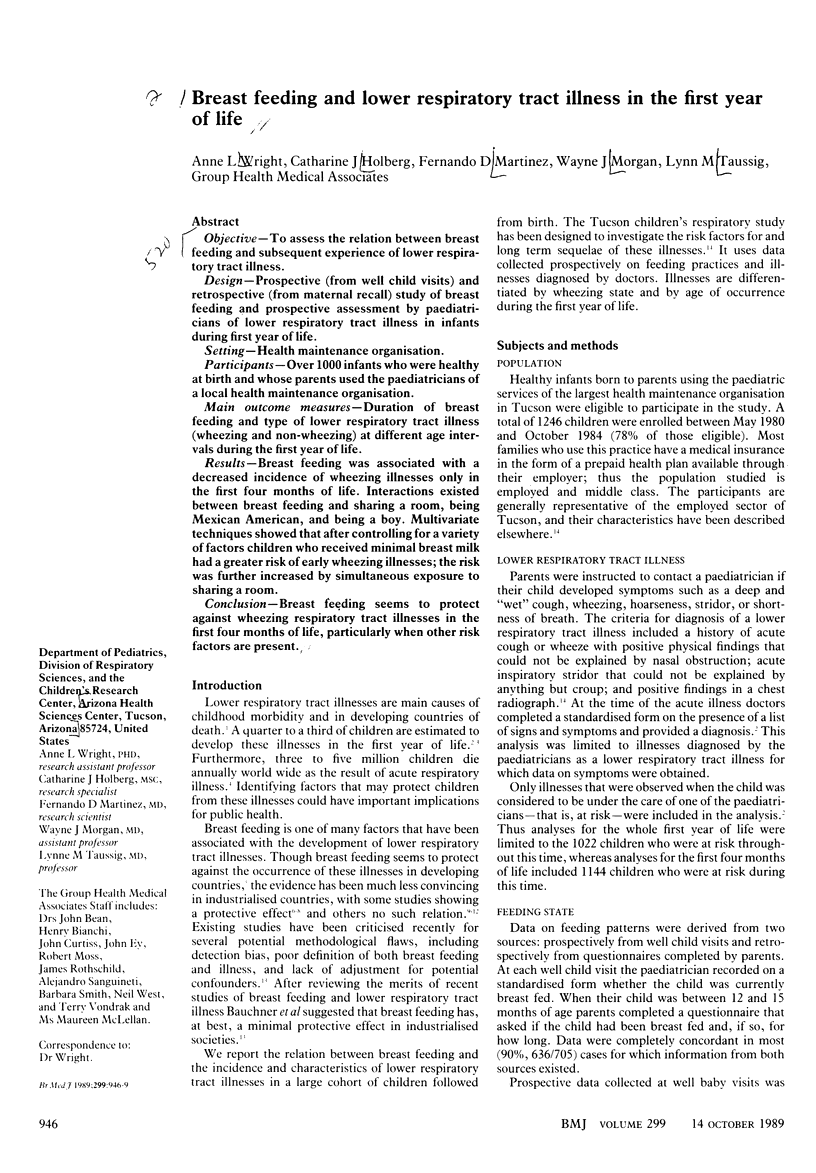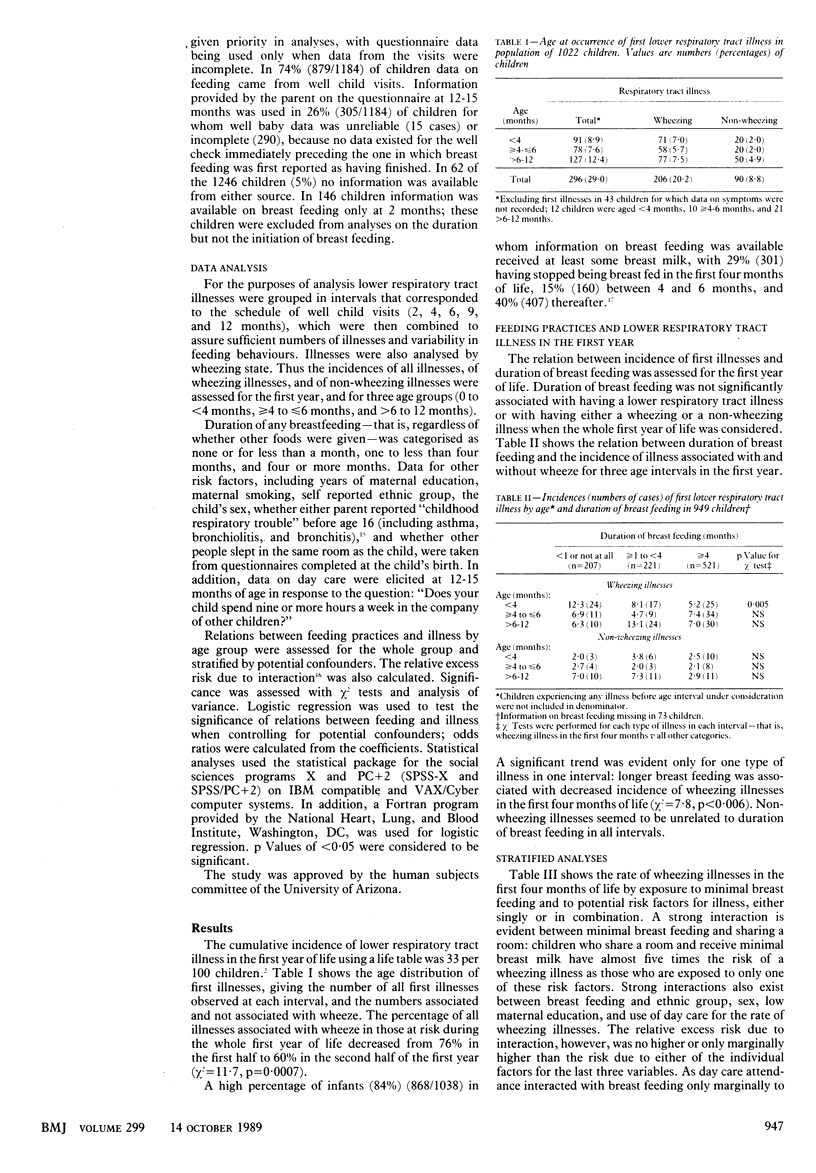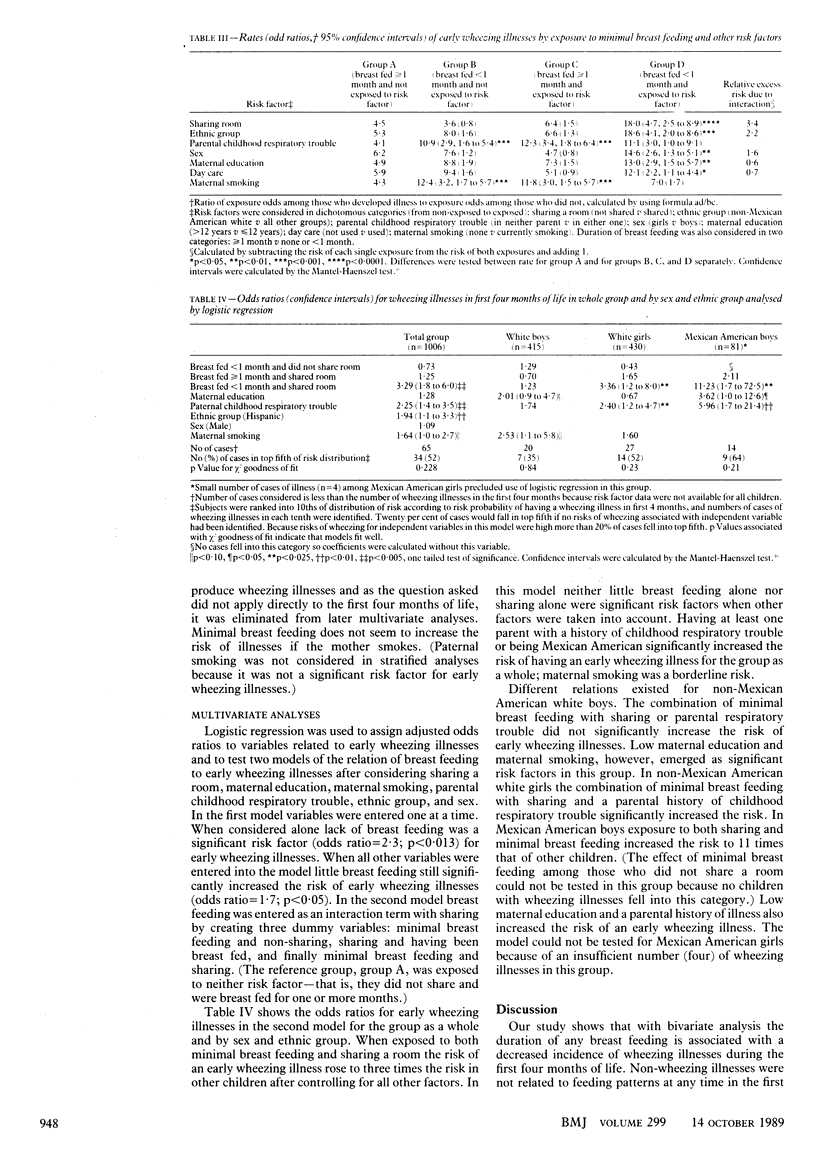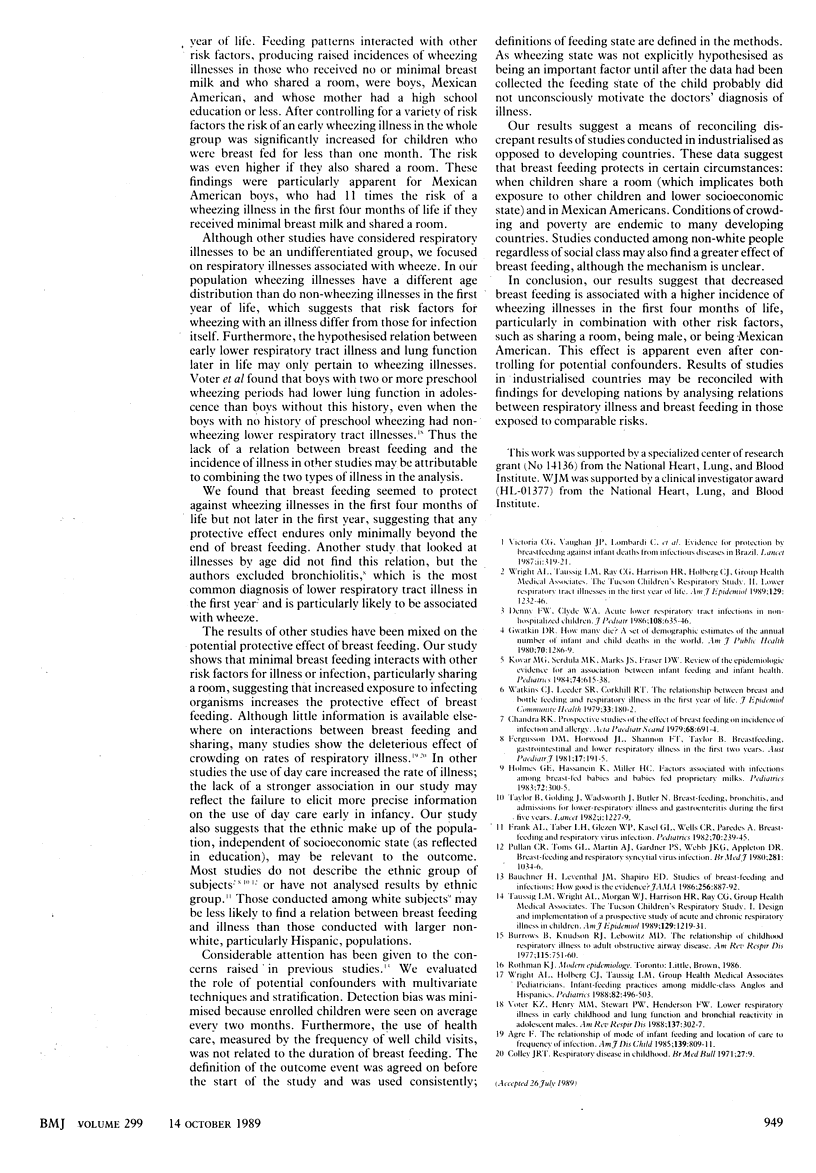Abstract
OBJECTIVE--To assess the relation between breast feeding and subsequent experience of lower respiratory tract illness. DESIGN--Prospective (from well child visits) and retrospective (from maternal recall) study of breast feeding and prospective assessment by paediatricians of lower respiratory tract illness in infants during first year of life. SETTING--Health maintenance organisation. PARTICIPANTS--Over 1000 infants who were healthy at birth and whose parents used the paediatricians of a local health maintenance organisation. MAIN OUTCOME MEASURES--Duration of breast feeding and type of lower respiratory tract illness (wheezing and non-wheezing) at different age intervals during the first year of life. RESULTS--Breast feeding was associated with a decreased incidence of wheezing illnesses only in the first four months of life. Interactions existed between breast feeding and sharing a room, being Mexican American, and being a boy. Multivariate techniques showed that after controlling for a variety of factors children who received minimal breast milk had a greater risk of early wheezing illnesses; the risk was further increased by simultaneous exposure to sharing a room. CONCLUSION--Breast feeding seems to protect against wheezing respiratory tract illnesses in the first four months of life, particularly when other risk factors are present.
Full text
PDF



Selected References
These references are in PubMed. This may not be the complete list of references from this article.
- Burrows B., Knudson R. J., Lebowitz M. D. The relationship of childhood respiratory illness to adult obstructive airway disease. Am Rev Respir Dis. 1977 May;115(5):751–760. doi: 10.1164/arrd.1977.115.5.751. [DOI] [PubMed] [Google Scholar]
- Clark P., Connolly P., Curtis A. S., Dow J. A., Wilkinson C. D. Topographical control of cell behaviour: II. Multiple grooved substrata. Development. 1990 Apr;108(4):635–644. doi: 10.1242/dev.108.4.635. [DOI] [PubMed] [Google Scholar]
- Denny F. W., Clyde W. A., Jr Acute lower respiratory tract infections in nonhospitalized children. J Pediatr. 1986 May;108(5 Pt 1):635–646. doi: 10.1016/s0022-3476(86)81034-4. [DOI] [PubMed] [Google Scholar]
- Frank A. L., Taber L. H., Glezen W. P., Kasel G. L., Wells C. R., Paredes A. Breast-feeding and respiratory virus infection. Pediatrics. 1982 Aug;70(2):239–245. [PubMed] [Google Scholar]
- Taussig L. M., Wright A. L., Morgan W. J., Harrison H. R., Ray C. G. The Tucson Children's Respiratory Study. I. Design and implementation of a prospective study of acute and chronic respiratory illness in children. Am J Epidemiol. 1989 Jun;129(6):1219–1231. doi: 10.1093/oxfordjournals.aje.a115242. [DOI] [PubMed] [Google Scholar]
- Wright A. L., Taussig L. M., Ray C. G., Harrison H. R., Holberg C. J. The Tucson Children's Respiratory Study. II. Lower respiratory tract illness in the first year of life. Am J Epidemiol. 1989 Jun;129(6):1232–1246. doi: 10.1093/oxfordjournals.aje.a115243. [DOI] [PubMed] [Google Scholar]


